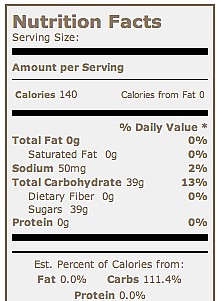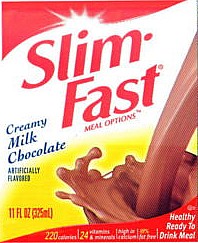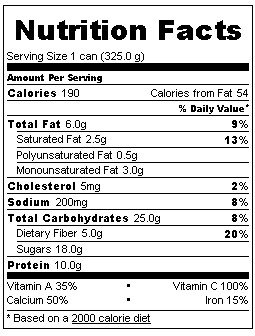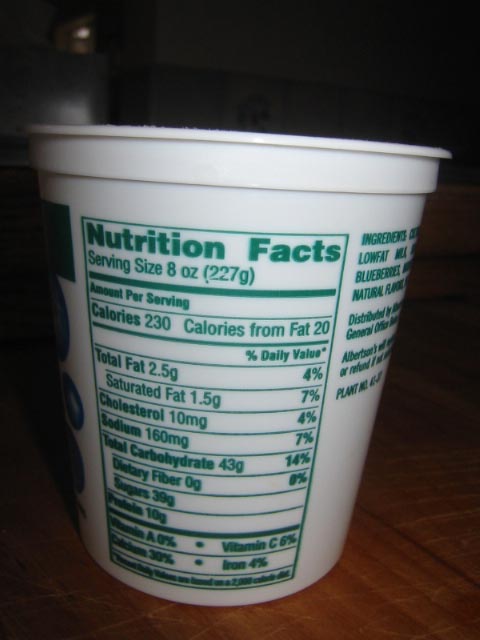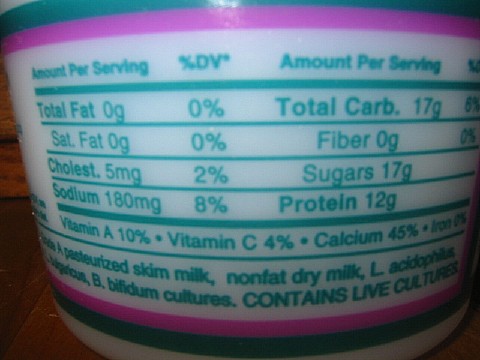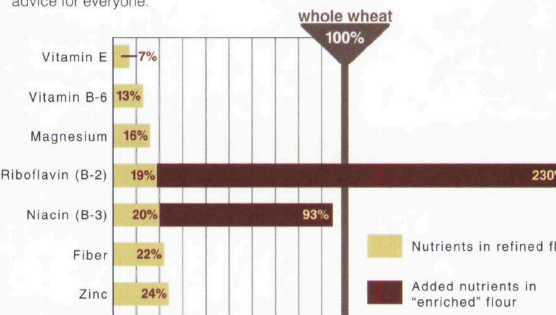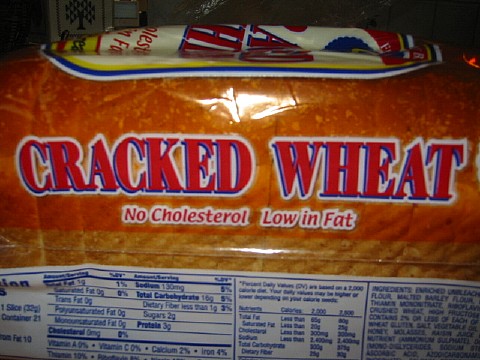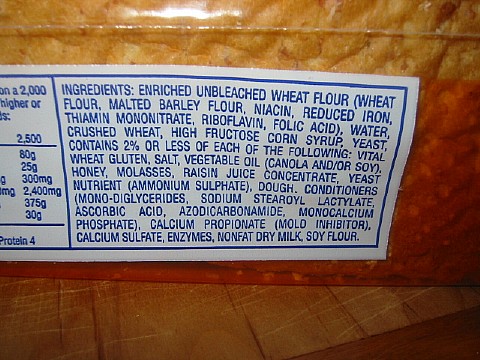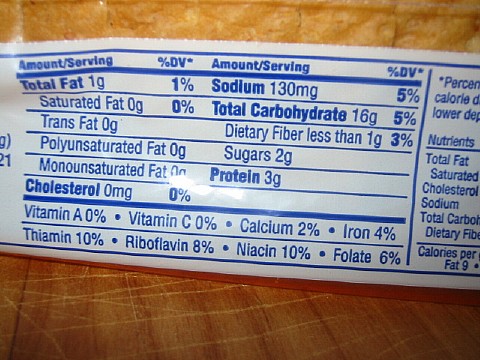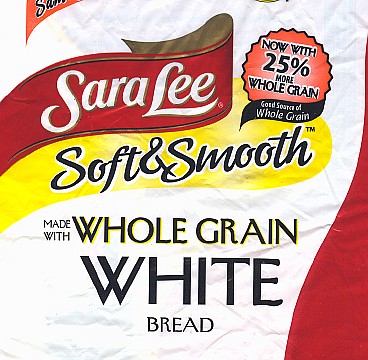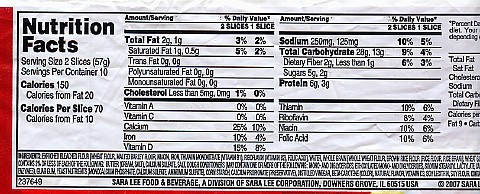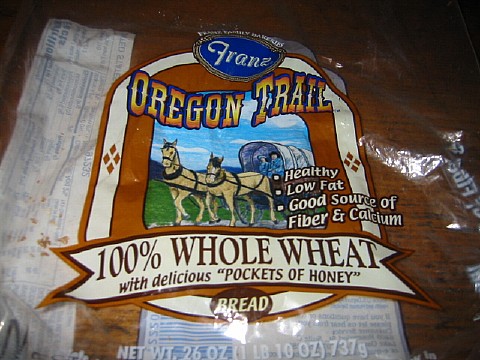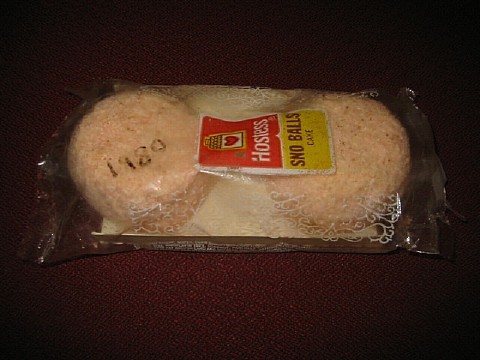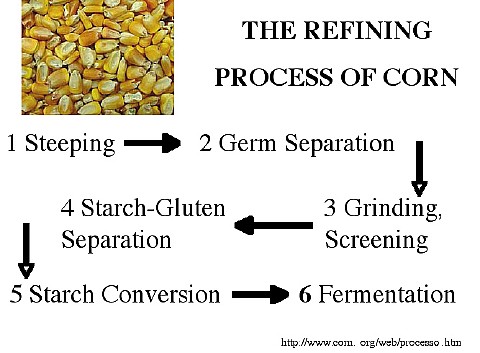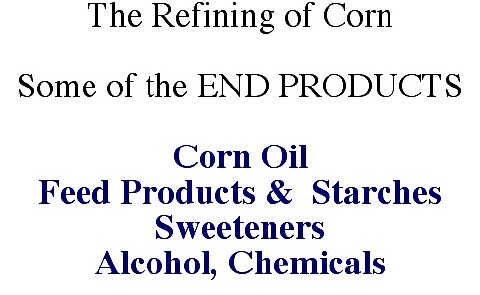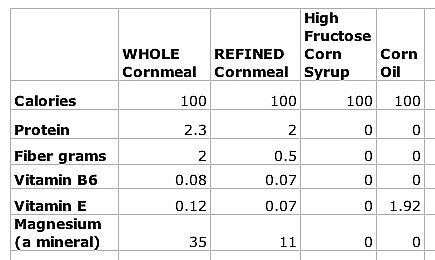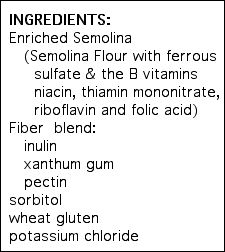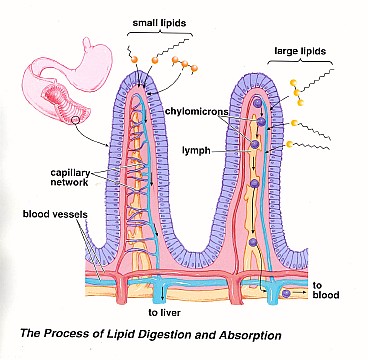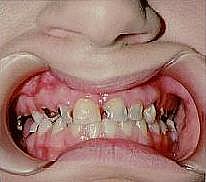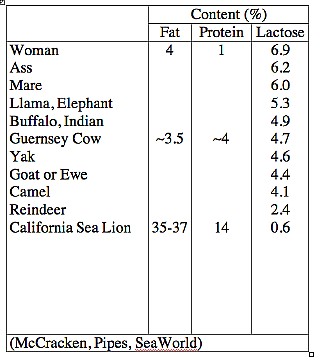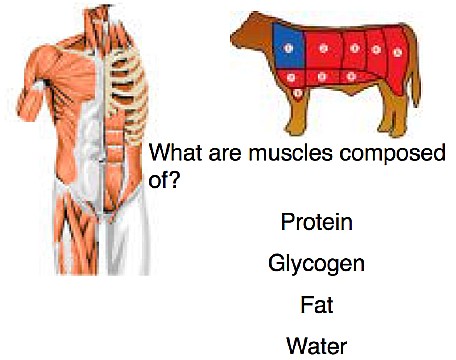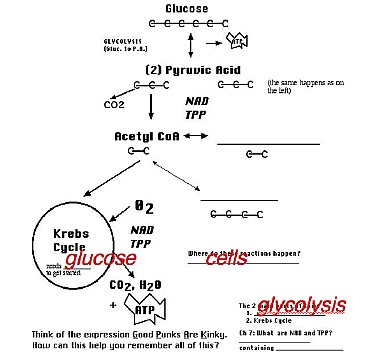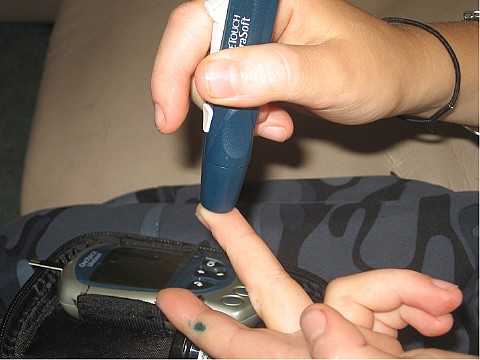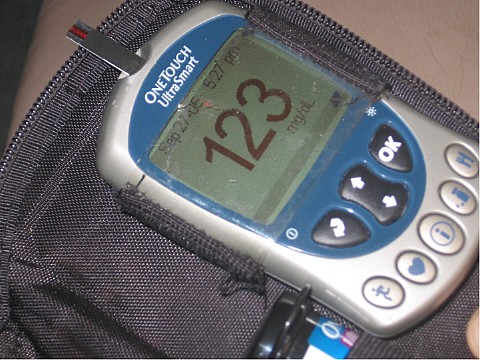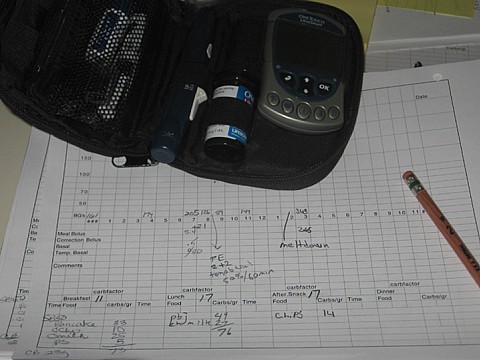There are
two locations in the body where bacterial
digestion of carbohydrates can be a problem. One is the mouth and there
other is the colon
(large intestine).
As your lecture outline says, what happens in the mouth after eating foods with
sugar is that the plaque bacteria eat the sugar (sucrose).
To use the energy in that sucrose, they break the sugar down anaerobically (without oxygen). This is the glycolysis
(shown in the image below).
Use the image below to fill in some of the other blanks you will see on
the last page of your lecture outline. The C on the
image below
= carbon. Cellular respiration is actually step 5 of the
Wilbur Drawing. During cellular
respiration, glucose combines with oxygen (and
certain enzymes). This beaks apart the glucose releasing
energy as ATP and producing C02
& H20.
|
What is left on the teeth
as a result of this anaerobic breakdown is
pyruvic acid. This pyruvic acid destroys the
enamel of teeth with the result being cavities.
A few of the ways to decrease your risk of cavities are:
- Limit refined foods with starch and sugar.
- Brush often.
- Floss regularly.
- Chew sugar free gum sweetened w/ xylitol.
- Have teeth routinely cleaned by a dental
hygienist.
The second location in the body where bacterial
digestion of carbohydrates can be a problem is in the colon.
Humans, like most other mammals from buffalos to yaks, produce lactose
for the milk to nurse their young. It gives their milk an
appealing sweet, but not overly sweet, taste. (It has about
half the concentration of sugar as the average soft drink.)

This photo of a nursing elephant, as well as the
following photo, was taken by Courtney Fitzpatrick, who grew up in
Eugene. She is a doctoral student at Duke University in North
Carolina and her research takes her to Kenya.

This is at the David Sheldrick Wildlife trust in Nairobi, an organization that cares
for orphaned elephants and then eventually reintroduces them to a
specific state park in Kenya. Apparently they have pretty high success
rates, although it takes a huge amount of human hours to care for them!
The enzyme lactase, made by a baby, breaks down lactose into two
simpler forms of sugar (glucose and galactose), which are then absorbed
into the bloodstream and provide glucose to fuel a baby's rapid
growth. While fat in the milk can provide energy for the
baby's muscles, as we've discussed, glucose is the only significant
fuel the human brain and nervous system usually uses.
Once a baby stops nursing, most slowly lose the ability to make
lactase. While this condition is called lactose intolerance,
it's the normal condition for most of the world. About 75% of
the world's adults are lactase-deficient, including most Asians,
Southeast Asians, Africans, Middle Easterners and Native
Americans.
Northern Europeans, among whom lactose intolerance is uncommon, have at
least a 10,000-year history of dairying and milk consumption which is
different from most of the rest of the world. A hypothesis is
that at some unknown point in time, a mutation or adaptation occurred
that enabled Northern Europeans to produce the enzyme lactase and
digest milk as adults. Through natural selection, the frequency of the
genetic trait for lactose tolerance increased in dairying societies
because individuals with this genetic trait had the advantage of being
better nourished. Not only did the milk provide
protein, also their calcium absorption was increased by the lactose and
the small amount of vitamin D in the milk. In societies
living closer to the equator such as in Africa, the sun's ultraviolet
light helped them manufacture vitamin D. In Northern Europe,
cloud cover limits sunlight for much of the year.
Human intestines are full of bacteria that are not
lactase-deficient. The bacteria break down lactose because
they want the fuel it can provide. This intestinal
fermentation produces hydrogen and other gases
and molecules that attract water. This can produce symptoms
like nausea, gas, bloating, cramps and diarrhea.
For a person with lactose intolerance, symptoms begin about 30 minutes
to 2 hours after eating or drinking foods containing lactose.
One term, a student told me that “lactose intolerance is one
of those sliding scale things“ and she was exactly
right. The severity of symptoms depends on many factors,
including the amount of lactase a person makes and the kinds of
bacteria they host. For these reason, not all people
deficient in lactase have the symptoms commonly associated with lactose
intolerance.
We definitely do not need to drink milk as adults but what we DO need is
calcium and some people find it difficult to get enough
calcium without drinking milk. Later in the term, we'll talk
more about getting calcium, but what will say is:
Getting enough calcium if lactose intolerant:
- Drink 1/2 cup milk WITH meals OR drink
milk w/ lactase
added.
- Yogurt without added milk solids because
those add lactose. When making yogurt, sometimes milk
solids are added to make it firmer.
- Aged, hard cheese, like Parmesan because
bacteria ate most of the lactose during aging
- See Snapshot 8-1 on page 283 in text for other sources of calcium.
|

